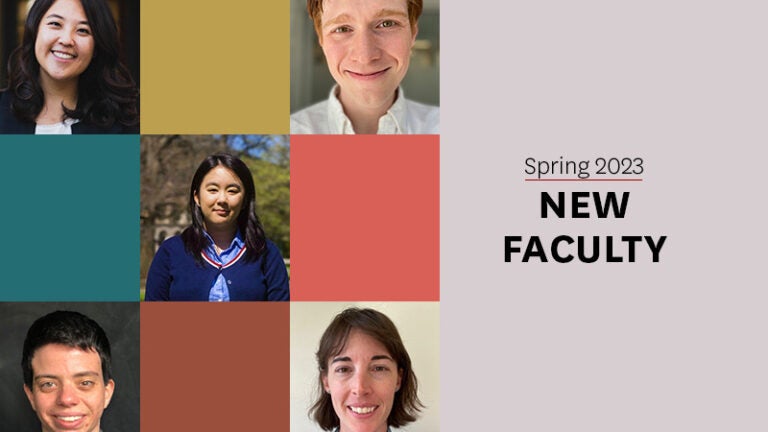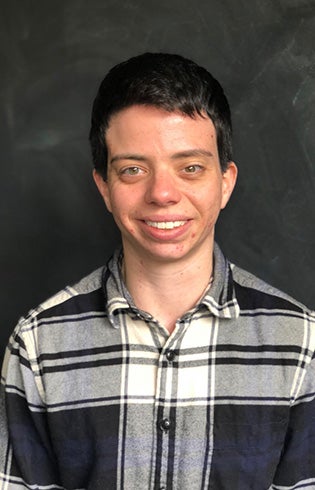
New faculty bring expertise in diverse topics from space-time ripples to social connection to bacterial plasticity
A new semester brings fresh faces to campus, including a new round of faculty joining the USC Dornsife College of Letters, Arts and Sciences. Their expertise includes topics from ripples in space-time to the curious plasticity of single-celled organisms to the psychology of social connection.
Some of our newcomers recently sat down to share a bit more about themselves and their research.
Elisa Baek | Assistant Professor of Psychology

My research broadly focuses on social connection. For example, I ask questions such as: How does sharing information help us feel socially connected to each other? How are individuals who are well-connected in their social networks different in the way that they use their brain?
Read any good books lately? I finally finished Tolstoy’s Anna Karenina after many years of reading it on and off. The last few chapters of the novel had me completely immersed.
No wonder it’s called the best novel to have ever been written!
What food or condiments will we always find in your kitchen? Bananas. I always end up eating just one or two and then they sit on the counter until it’s time to make banana bread.
Peter Foster | Assistant Professor of Physics and Astronomy

I work on the physics of living systems, with a focus on the cytoskeleton — the cellular machines that drive processes ranging from motility to cell division. I’m interested in understanding how the properties of cytoskeletal materials emerge from the interactions between the materials’ protein constituents and the flows of energy through the system.
What are your hobbies? When I can, I love to get outdoors! I’ve really been enjoying exploring the hiking trails near L.A.
Read any good books lately? I’m currently reading Endless Forms Most Beautiful by Sean B. Carroll.
What food or condiments will we always find in your kitchen? I’ll always have a soft spot for Cabot cheddar.
Kelly Luo | Gabilan Assistant Professor of Physics and Astronomy

My lab is passionate about understanding interactions between the quantum degrees of freedom in solid-state systems such as electron spins, photons and magnons. We investigate their couplings, propagations and nonequilibrium dynamics, and explore new device concepts for spin-based quantum information processing.
If you could invite one person to dinner, living or dead, who would you select? What would be on the menu? Marie Curie; anything.
If time-travel was possible, what era would you head to and why? 50 years from now. Maybe we will have another quantum revolution by then?
What food or condiments will we always find in your kitchen? Sichuan peppercorns, both the green and the red kinds.
Kris Pardo | Assistant Professor of Physics and Astronomy

My work focuses on how we can use astrophysical data to better understand our universe. Specifically, I’m interested in how we can use this data to observe gravitational waves, which are ripples in space-time produced by the mergers of black holes, and to test theories for dark matter, which is a mysterious type of particle(s) that makes up most of the matter in our universe.
What are your hobbies? I try to get outdoors (and away from screens!) as much as possible when not working. I like hiking with my Australian shepherd puppy, trail running and rock climbing.
Read any good books lately? I recently read and really enjoyed Dark Matter by Blake Crouch (although it has absolutely nothing to do with actual dark matter, sadly).
Julia Schwartzman | Assistant Professor of Biological Sciences

I’m fascinated by bacteria because they are single cells with the capacity to do many different things. In contrast, most of the cells that make up animals, plants and other forms of complex multicellular life are less phenotypically plastic: They are programmed to exist in a more limited range of states.
How is phenotypic plasticity “wired” into bacterial genomes? How does it evolve? And how does it scaffold more complex phenomena such as functions that emerge from groups of cells and interactions across kingdoms of life? My group takes inspiration from coastal marine ecosystems to tackle these questions.
What are your hobbies? Skiing, hiking, road biking.
Read any good books lately? The Master and Margarita by Mikhail Bulgakov
What food or condiments will we always find in your kitchen? Cheez-Its.